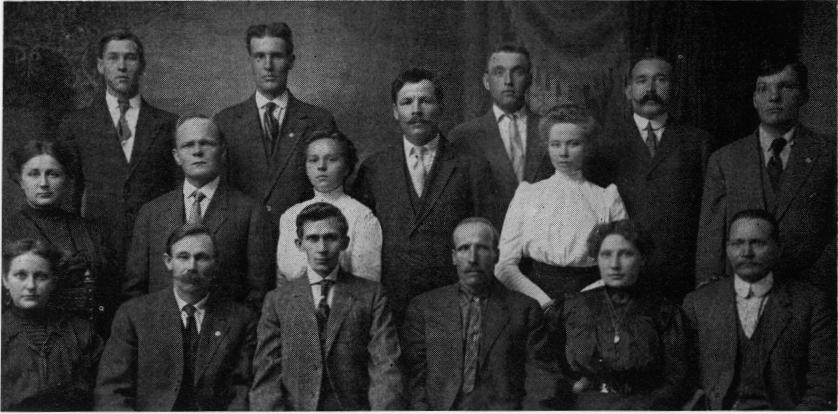Maintenance costs were considerable, and real estate taxes high, so that income also had to be considerable. To help raise some of this money, the auxiliary groups - the dramatics group, the entertainment committee, the brass band, the chorus, the gym team, the sewing circle, the dance band - had to be constantly active. In early years, when the members of the club were young, as were all the Finns in general, dances were held twice a week, and the income from these evenings was a good source for paying bills and interest charges and even for cutting down the mortgage. Later, when the Finns grew older and their legs stiffer, there were

Virginia workers' dramatic group in 1910. Front row: Tilda (Hasala) Roslöf,
Vilho Brander, Ernest V. Pitkänen, director, John Flander, Hilda (Mäkelä)
Nurmi, John Sairio. Center: Hedwig (Pitkänen) Tenhunen, Abram Rönkä,
Mandi (Alt) Siren, Sigrid Johnson, John Lindberg. Back row: Pekka Partanen,
Jack Starck, John Huttunen, John Markkanen, Sam Ruotsala.
less and less dances and finally they ended altogether except, perhaps, for an hour or two of dancing to top off an evening's social program.
After dancing the most effective source of income was the dramatics club. From the very beginning of the society, its activity in this field had been brisk. The work was begun by Ernest V. Pitkänen, who continued for years to lift the artistic level of the performances, attended by most of the Finns of Virginia. With the exception of a brief summer recess, plays were put on every other Sunday evening. As soon as the Opera was built, a good collection of scenery was built up - and the Opera stage even had a pool sunk below the stage level, so that for some
429